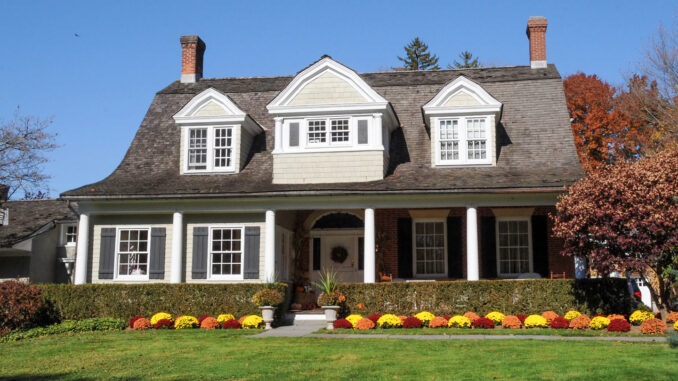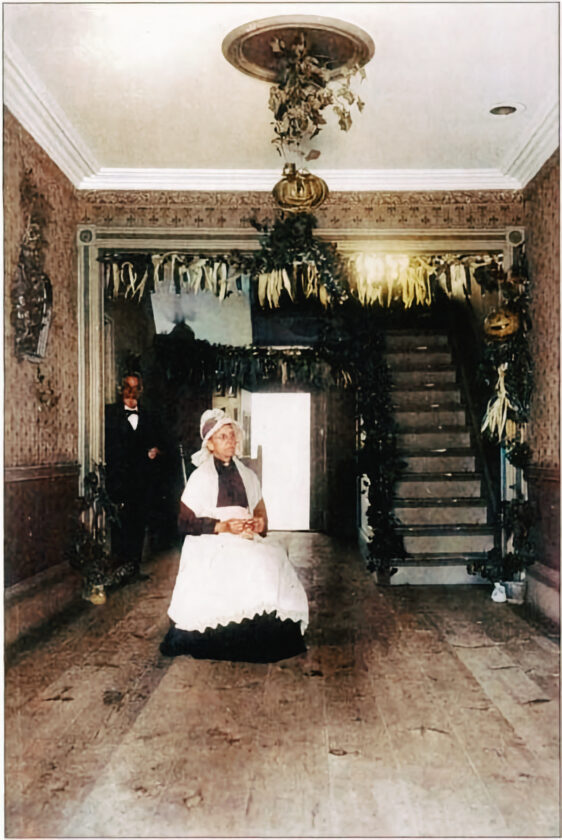
ROCKLEIGH—As September turns to October, we are starting to see the appearance of jack-o’-lanterns, plastic tombstones, skeletons, and spiderwebs in Northern Valley neighborhoods.
Halloween has become as much a holiday for adults as it is for children. Of course, there have always been adults who loved this spooky time of year—even in 1890, when the photo on this page was snapped. The woman is Mrs. Clara Sloat, of Rockleigh, sitting in the foyer of her house on present-day Rockleigh Road. The walls behind her are decorated with ivy and dried corn, and at least four jack-o’-lanterns can be seen.
Having posed for this photo, she must have been proud of her handiwork. In the doorway behind Clara is her husband, Jenkins Sloat.

The Sloats, who wed in 1860, had three children: Charles Edwin (1865), Daisy Florence (1869) and Joseph Elting (1878). The home where they lived, shown in a photo also dated to around 1890, still stands on Rockleigh Road and is listed on the National Register of Historic Places.
The original section of the house was built in 1741 by Abraham D. Haring, who served as an officer during the French and Indian War. A large Dutch Colonial-style addition was added in 1828. Samuel Corning later bought the house in 1856.
Sloat purchased the house and its 165 acres from Corning and operated a sawmill on the property, at the south side of Rockleigh Road on the Sparkill Brook. The mill processed lumber for floorboards, construction, and siding. Business had shut down by the last quarter of the 19th century; ruins of a stone wall embankment mark the old mill location.
After the Sloats, the next owner of the house was William L. Tait, the first mayor of Rockleigh. Tait owned the house 1913–1930 and expanded it significantly.
